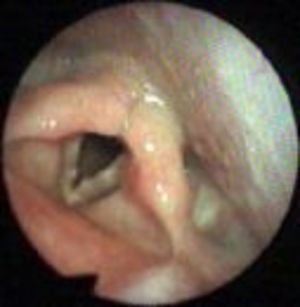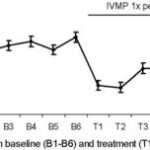Benign Vocal Cord Growths
Polyps, Nodules, Cysts and Reactive Vocal Cord Growths
The term vocal cord growth or lesion refers to a group of non-cancerous (benign), abnormal growths in or along the covering of the vocal cord. Vocal cord growths are the most common causes of voice problems and are usually either nodules, polyps or cysts. It is thought that lesions arise from ‘heavy’ or traumatic use of the voice or misuse of the voice by speaking or singing in an improper pitch, speaking excessively, screaming or yelling or using the voice excessively while sick or when having laryngitis. A change in voice quality and persistence hoarseness are the first warning signs of a lesion.
Vocal Cord Nodules
Vocal cord nodules are also known as singer’s nodes or screamer’s nodes or ‘calluses of the vocal fold’. They are caused by overuse of the vocal cords and usually appear on each side (bilateral), in the middle of the vocal cords, facing each other. There are two types of vocal cord nodules: soft or young nodules and hard or old nodules. Many times, nodules diminish or disappear when the trauma or misuse of the vocal cords stops. Voice therapy can very often successfully reduce or eliminate nodules. Large, fibrous or chronic nodules may require surgical removal. Vocal cord nodules are common among children (most often boys) and young adult females. People with vocal cord nodules are usually extroverts with a loud voice, which can often be particularly percussive (sharp to the ear).
Vocal Cord Polyp
A vocal cord polyp occurs most often on one side of the vocal cords and come in a variety of shapes and sizes. Polyps are fluid filled lesions and cause a wide range of voice disturbances. They are generally caused by voice abuse, allergic reactions and inhalation of irritants such as cigarette smoke. They often occur in people with stomach acid reflux. Polyps make the voice hoarse and breathy. Vocal cord polyps are usually reddish due to the increased blood supply.
Vocal Cord Cyst
A cyst is a firm mass of tissue within a membrane, or sac. The cyst can be located near the surface of the vocal cord or deeper, nearer the ligament. The size and location affects the degree of disruption of the voice by changing the vocal cord vibration and the severity of hoarseness or other voice problems.
Vocal cord polyps and cysts most often occur unilaterally (on one vocal cord only) and generally do not respond to voice therapy. Surgical removal is recommended for voice improvement.
Reactive Vocal Cord Growth (Lesion)
A reactive vocal cord growth or lesion is a mass located opposite another vocal cord growth such as a cyst or polyp. The reactive growth is thought to be a callus or reaction from trauma or repeated injury from the growth on the opposite vocal cord. There are two unique features of a reactive vocal cord growth: There is little or no disruption of the vocal cord on the side with a reactive growth and when the reactive vocal cord growth is treated by voice rest and speech therapy, it will shrink or disappear.
Benign Vocal Cord Lesion Signs
Vocal fatigue
Unreliable voice
Delayed voice initiation
Low, gravelly voice
Low pitch
Voice breaks in first passages of sentences
Airy or breathy voice
Inability to sing in high, soft voice
Increased effort to speak or sing
Hoarse and rough voice quality
Frequent throat clearing
Extra force needed for voice
Voice ‘hard to find’
Sensation of a lump in the throat
Other medical problems can contribute to voice problems such as reflux, allergies, medication side effects and hormonal imbalances.
Diagnosis
When a lesion is present, symptoms may increase or decrease, but they do not go away on their own. Diagnosis begins with a history of the voice problem, and then an Otolaryngologist will perform a thorough examination of the vocal cords using a laryngoscope with light. A telescope-tube is passed down the throat to view the voice box and record pictures. The doctor will examine the vocal fold vibration.
Treatment
The most common treatments include voice rest, voice therapy, singing voice therapy and phonomicrosurgery (a surgery involving microsurgical techniques and instruments)
Aging of the Larynx
Another interesting condition of the larynx or voice box is aging of the larynx. This is usually characterized by a decrease in voice clarity, increased breathiness and decreased loudness and slowly changing vocal pitch. The most common cause for this is atrophy (wasting away, wither, decrease in size). As we age, our bodies lose muscle tone. This occurs in the vocal cord muscles too. When this happens, the shape of the cords become bowed and leave a gap when they come together to produce sound. This results in increased air escaping through the gap causing breathiness and decreased loudness. Also, changes in the mucous membrane and bulk of the vocal cords cause changes in pitch. If the condition becomes particularly troublesome, speech therapy may help. If speech therapy fails, surgical procedures including voice cord injections with botulinum toxin (Botox) or implants can sometimes be of benefit.
Voice Health is not just for performers and singers, it is for everyone. Some components of voice health are: value your voice through healthy diet and lifestyle, optimize your voice with vocal warm-ups before use (singing), invest in your voice with training in proper voice technique, cherish your voice by avoiding voice misuse, overuse and abuse, exercise your voice to increase endurance and power.
Your voice is a special instrument capable of beautiful expression. Most voice disorders are preventable. Voice health or vocal hygiene plays a key role in voice preservation and the prevention of voice disorders.





